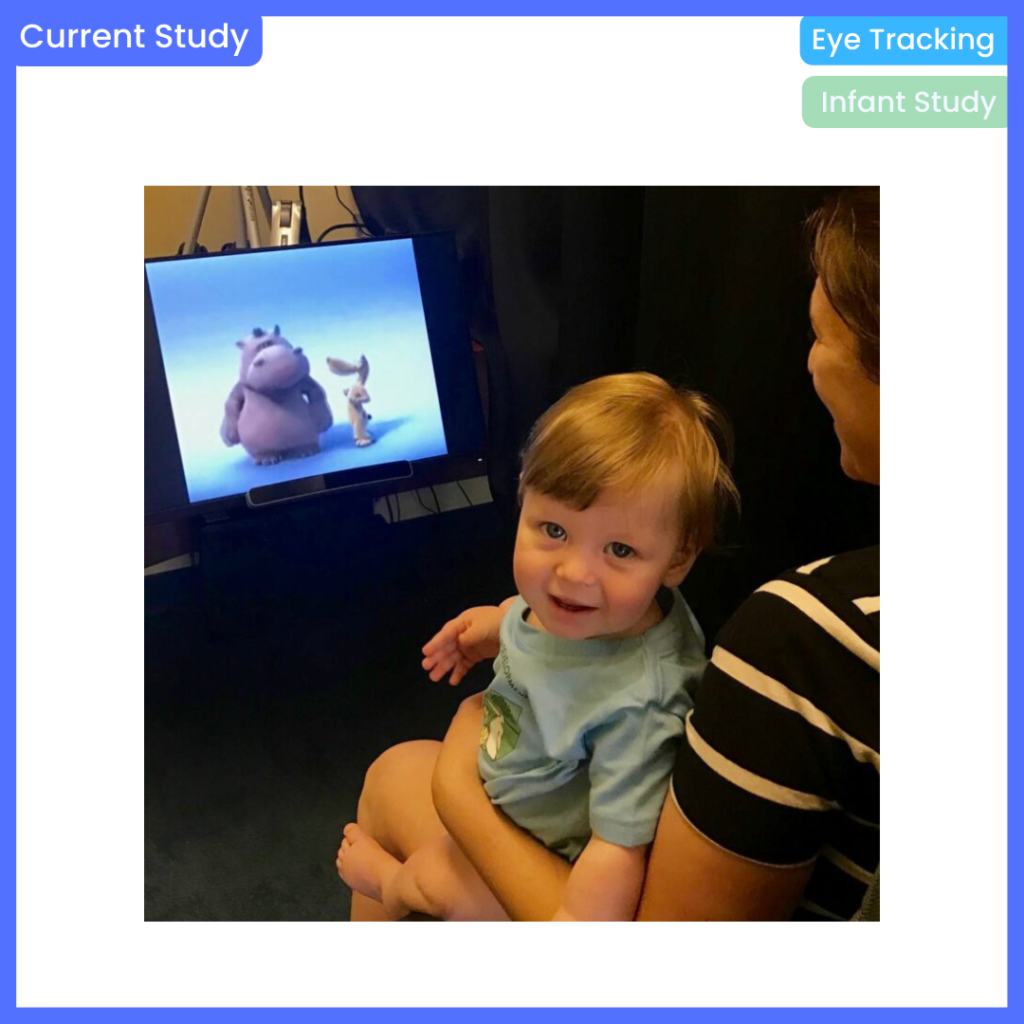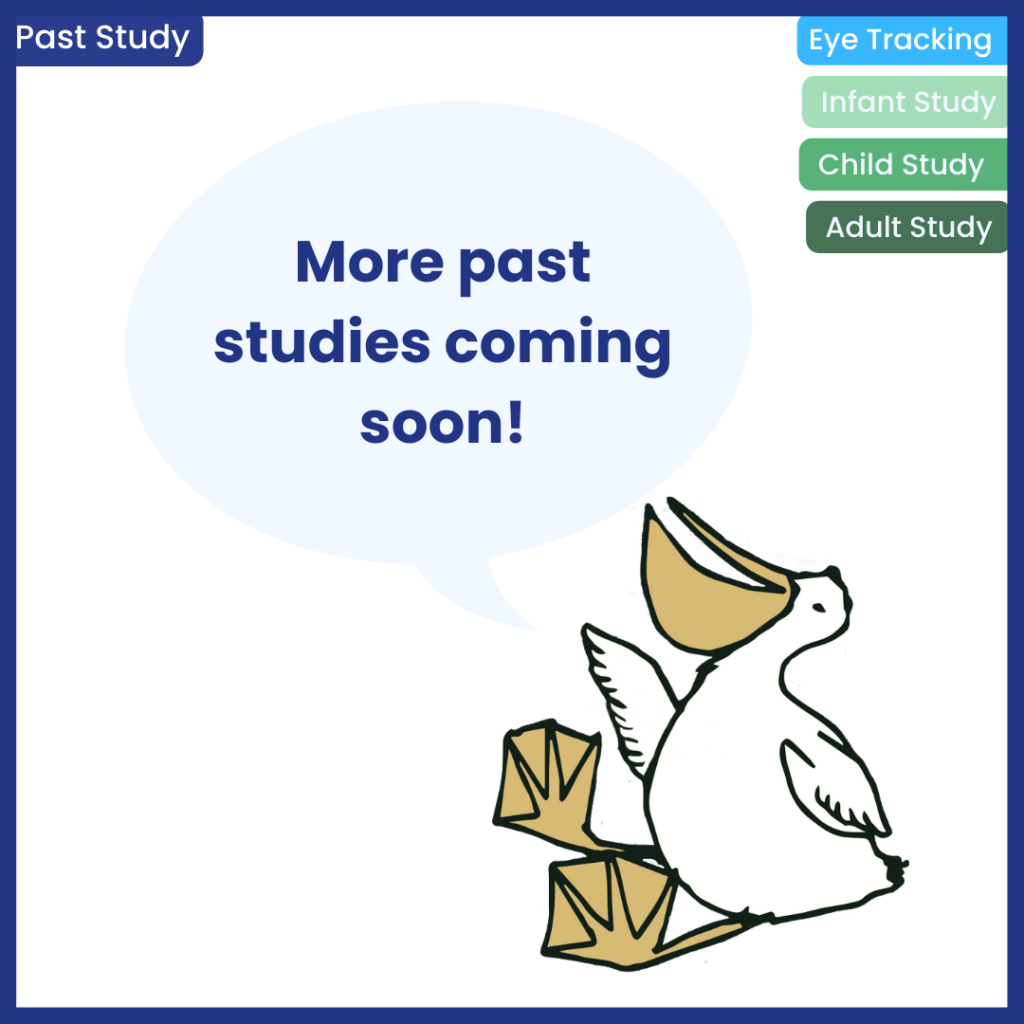Current Studies
Exploring Infants' First Year

Ages: 4 months, 6 months, 8 months
3 visits, 60-90 minutes each
In this study, infants view short videos while we use an eye tracker to record where they’re looking on the screen. Infants also play with toys and play with their caregiver while we record their heart rate and behavior. Parents complete questionnaires about their baby’s behavior and recent experiences.
Attention and Learning in Childhood
Ages: 3-5 years
1 Visit, 1 Hour
In this study, children view science lessons on a computer screen while we use an eye tracker to record where they are looking on the screen. Lessons include both auditory and visual information. Children also complete a short numbers activity.
Not interested in or eligible for our current studies? Join our registry to stay connected about future research opportunities for your family!

Attention to Caregivers in Infancy

Ages: 4 months; 6 months; 8 months
3 Visits, 60-90 minutes
This study looks at how and why infants’ attention to their caregiver changes over the first year of life. Families who participate are asked to visit our lab three times, when infants are 4 months, 6 months, and 8 months old.
During the visits, infants and their caregivers do several activities together:
Caregivers complete a questionnaire that asks about family demographic information, typical behavior, social networks, and past experiences.
Infants view several short videos while we use a non-invasive eye tracker to record where your child looks on the display.
Next, infants play with several standard infant toys while we record where they are looking.
Lastly, infants and caregivers play together and interact in different ways while we use a non-invasive EKG device to measure infants’ heart rate.
Many families join out of curiosity about their child’s development, and have shared that they found the experience fun and easy! Additionally, your participation helps us uncover how infants learn so quickly, laying the foundation for lifelong learning.
Families can also earn up to $100 in electronic gift cards for completing 4, 6, and 8 month visits, or $30 per visit plus a $10 bonus and a small gift for your baby for attending all three appointments!
Are you expecting or caring for a baby under five months? Sign up to stay in touch and get updates as your baby grows!
Attention and Learning in Childhood
In this study, children will view educational lessons on a computer screen. Lessons will include auditory and visual information. We will use a non-invasive eye tracker to record where your child looks as they view the display.
Not interested in or eligible for our current studies? Stay connected by joining our contact list. We’ll keep you informed about future research opportunities that you or your children might be interested in!



